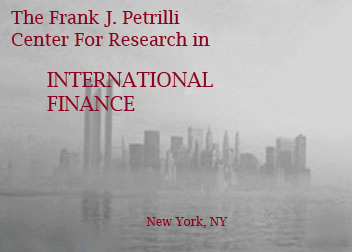Disciplines
Finance and Financial Management
Abstract
We study the behavior of real exchange rates in a two-country dynamic equilibrium model. In this model, consumers can only consume domestic goods but can invest costlessly in capital stocks of both countries. Nevertheless, transporting goods between the two countries is costly and, hence, the rebalancing of the capital stock can only happen finitely often. We propose a realistic cost structure for goods transportation, wherein the total cost increases with the amount of shipment but the unit cost decreases with it due to economies of scale. Given such a cost structure, the optimal decisions on when and how much to transfer need to be determined jointly. The dual decision depends upon the magnitude of economies of scale, the production technology specifications, and the consumer preferences. The model can reconcile the observed large short-term volatility of the real exchange rate with its slow convergence to parity. Further, the drift and diffusion of the real exchange rate are not uniquely determined by the real exchange rate level. The dynamics of the real exchange rate can only be determined by a joint analysis of the real exchange rate and the underlying economic fundamentals such as the capital stock imbalance between the two countries.
Recommended Citation
GOSWAMI, GAUTAM; SHRIKHANDE, MILIND; and WU, LIUREN, "A Dynamic Equilibrium Model of Real Exchange Rates with General Transaction Costs" (2002). CRIF Working Paper series. 29.
https://research.library.fordham.edu/crif_working_papers/29

